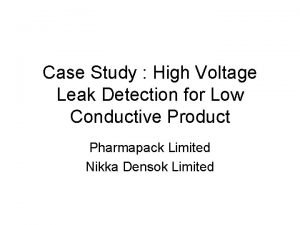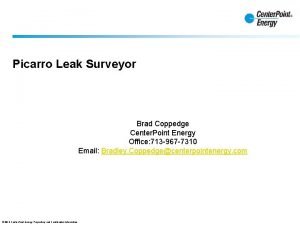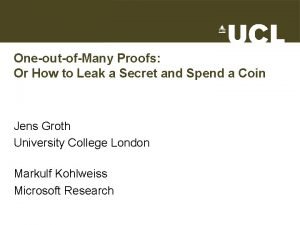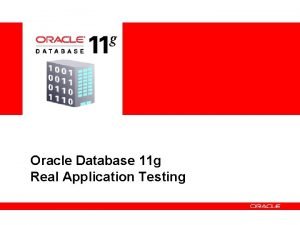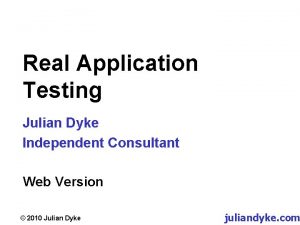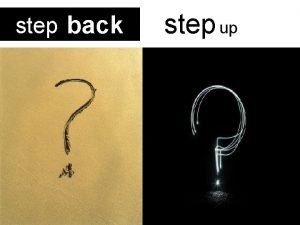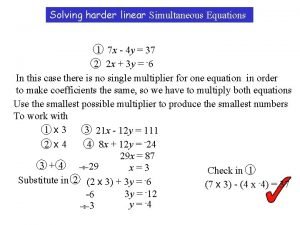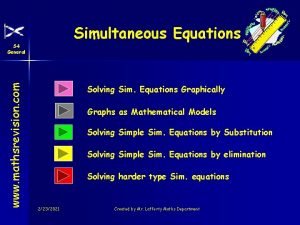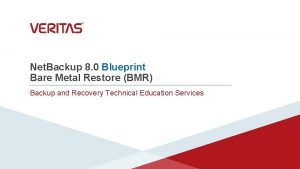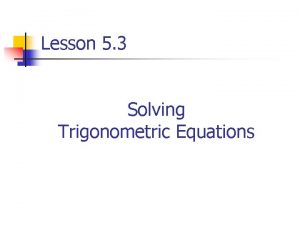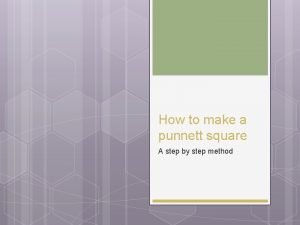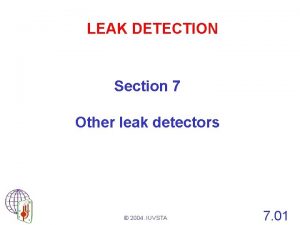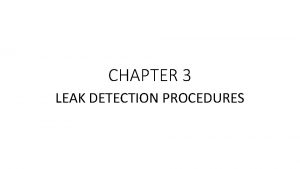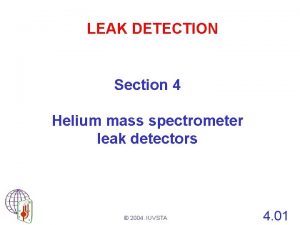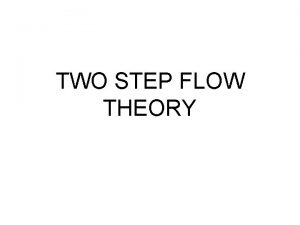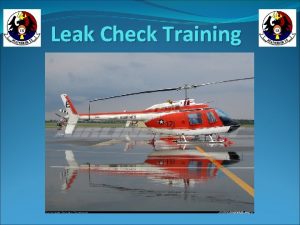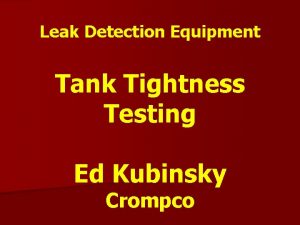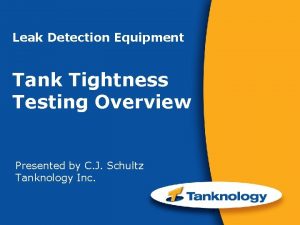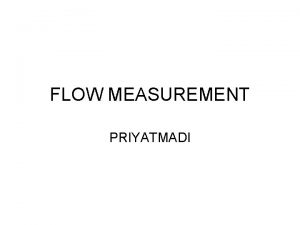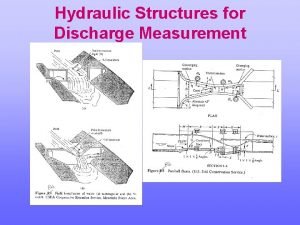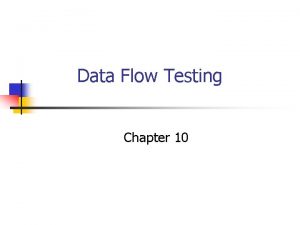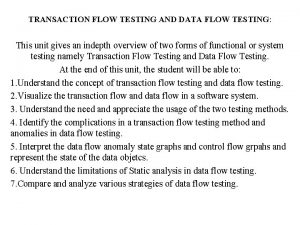Leak Detection NIGHT FLOW MEASUREMENT STEP TESTING LEAK























- Slides: 23

Leak Detection NIGHT FLOW MEASUREMENT, STEP TESTING, LEAK DETECTION EQUIPMENT

Content Leakage Components Leak Detection Equipment 2

1. Leakage components BACKGROUND LEAKAGE, BURSTS

Leakage components LEAKAGE COMPONENTS 4 4

Background vs burst leakage Background Leakage • The aggregation of leakages from all fittings on the distribution network that are too small to be detected by visual or acoustic inspection • Background leakage are individual leaks with flow rates less than 0. 25 m 3/hr at 50 m pressure - the minimum leak that can realistically be detected with modern technology • Major influence: pressure Burst Leakage • Loss of water resulting from bursts on the distribution network • Major influence: the speed with which the burst is located and repaired *Amount of water loss through leakage varies during the day as it depends on the pressure LEAKAGE COMPONENTS 5 5

2. Leak detection MINIMUM NIGHTFLOW, STEP TESTING

Minimum Night Flow Amount of water loss through leakage can be estimated with Minimum Night Flow (MNF) testing • The MNF is the lowest hourly average flow into the DMA over a 24 -hour period, • • • MNF is usually obtained between 2 and 4 am, when most tanks have been filled and users are asleep The Legitimate Night Flow (LNF) is the customer minimum night consumption at the time of minimum night flow • Domestic customers – toilet flushing, washing machines etc; use a standard legitimate night time factor, or measured sample • Large nightly users (such as night clubs or industries) – manually read or log their meter or use a portable meter The Net Night Flow (NNF) is the DMA leakage at the time of minimum night flow: what remains after subtracting the LNF from the MNF • Some of the leakage occurs on the customer’s premises and therefore is not part of the utilities NRW. As such, the NNF should be divided into ‘Utility leakage’ and ‘Customer leakage’ LEAK DETECTION 7

Minimum Night Flow • • • Identify the MNF (using a logged DMA meter) Identify the typical LNF Calculate the NNF = MNF – LNF Estimate the ‘Utility leakage’ UNNF = NNF – ‘Customer leakage’ As leakage is proportional to pressure, to represent the average leakage through the day the UNNF should be corrected with a pressure factor (pf), typically pf = average daily DMA pressure / average MNF pressure Average DMA leakage = UNNF*pf LEAK DETECTION 8 8

Example LEAK DETECTION 9 9

Step testing is a method in which parts of the DMA network are successively isolated to narrow the possible location of leaks • Select the first step furthest away from the DMA water meter • Each step should take around 20 minutes to see the impact • Flow as well as pressure should be checked • Big drop in flow and increasing pressure indicates leakage • Undertake step testing during night time (00. 00 – 04. 00 am) to avoid measurements disturbed by fluctuations in water demand • First cut off the water supply LEAK DETECTION 10 10

Step testing example LEAK DETECTION 11

Step testing example LEAK DETECTION 12

Step testing example LEAK DETECTION 13

Step testing example LEAK DETECTION 14

Step testing example LEAK DETECTION 15

Step testing example LEAK DETECTION 16

Step testing example LEAK DETECTION 17

Step testing example Relation flow/pressure and time LEAK DETECTION 18

3. Leak detection equipment CLAMP-ON METER, ACCOUSTIC METER

Clamp-on meter A clamp-on meter is a portable meter with which flows can instantaneously be measured through pipes of different types and sizes. Clamp-on meters are used: • When measurements are needed in location where no meters are installed • To check the accuracy of installed meters Furthermore, • Accuracy of < 1% possible • A clamp-on meter are expensive (~10. 000 Euro) and security is needed during night flow measurements Clamp on meter in box and installed LEAK DETECTION EQUIPMENT 20

Clamp on meter, quick start guide LEAK DETECTION EQUIPMENT 21

Accoustic Meter Amo LEAK DETECTION EQUIPMENT 22

Other? Amo LEAK DETECTION EQUIPMENT 23
 Step 1 step 2 step 3 step 4
Step 1 step 2 step 3 step 4 High voltage leak detection
High voltage leak detection Picarro surveyor
Picarro surveyor Secret leak detection
Secret leak detection Pawel okonski
Pawel okonski Real application testing
Real application testing Oracle real application testing step by step
Oracle real application testing step by step Blood flow through the heart step by step
Blood flow through the heart step by step Data flow testing strategies in software testing
Data flow testing strategies in software testing Mda technique
Mda technique Creating a dinosaur sculpture step by step
Creating a dinosaur sculpture step by step How to write an informative essay step by step
How to write an informative essay step by step Steps of an argumentative essay
Steps of an argumentative essay Step back step up
Step back step up Solve
Solve How to solve simultaneous equations
How to solve simultaneous equations Simultaneous equations step by step
Simultaneous equations step by step Combining like terms steps
Combining like terms steps What food do plants make
What food do plants make Particle filter example step by step
Particle filter example step by step Netbackup bare metal restore step by step
Netbackup bare metal restore step by step Trigonometric equations
Trigonometric equations Face shape step by step
Face shape step by step Punnett square steps
Punnett square steps

